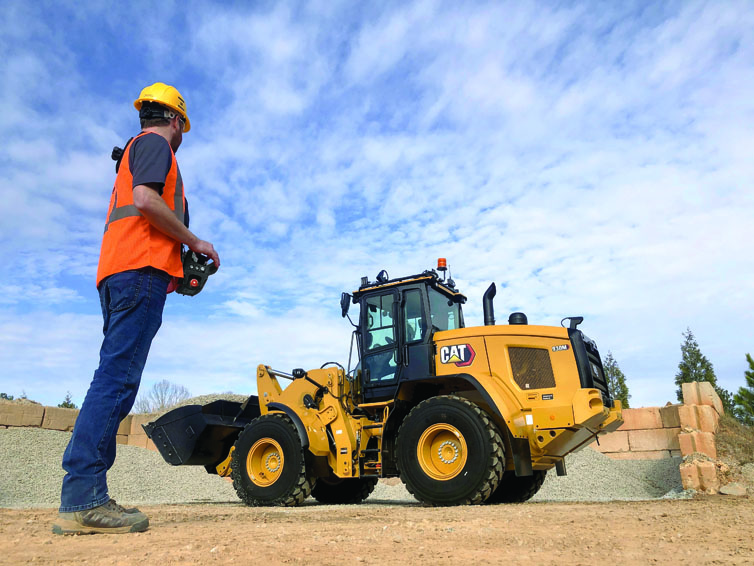Over the last few decades, technology has been the catalyst for significant advancement in safety, productivity and sustainability in the construction industry. With intuitive systems in place, companies are maximizing efficiencies, driving productivity, lowering costs, and tracking equipment in real-time—all while improving operator safety.
Technology isn’t the only thing that’s changing. The industry is starting to take steps towards improving workplace diversity and inclusion. In an environment where labour is in short supply, encouraging diversity in construction is a top priority—helping companies make the most of untapped potential while retaining the talent they have. Organizations are starting to see how creating a diverse and inclusive workplace isn’t just the right thing to do, it’s also good for business.
Emerging tech is playing a pivotal role—driving big change throughout the industry, attracting a new generation of workers, removing barriers and promoting inclusivity. Technology advancements give companies tools to remain competitive. However, making the most of these advancements requires innovation and new ways of thinking to apply them in meaningful ways.
The construction industry is ready for a younger, more diverse generation of workers
In B.C., women represent only a fraction of the construction trade workforce. In other skilled trades, that number is even smaller. Closing the gender gap is an ongoing effort—there are many organizations working to connect women to construction and other trade jobs. Companies are becoming increasingly committed to not just understanding, but also taking action to deal with the underlying barriers.
Women aren’t the only demographic that has the potential to change the industry. There are approximately 795,000 working-aged Canadians with disabilities who are unemployed, but whose disability does not necessarily prevent them from employment. Almost half of these people have post-secondary education, so the construction industry has the opportunity to find new ways of attracting and retaining this segment of the skilled workforce. Technology will play a key role as it can reduce many of the physical barriers and concerns around safety and accessibility.
Technology is also a driving factor in attracting younger talent. These are the newcomers to the workforce that have grown up with tablets, cell phones, video games and consoles in their hands from a young age. Technology isn’t as much of a novelty with this generation, it’s an expectation. Advancements like remote operating stations can play a pivotal role in attracting these employees.
Attracting and hiring a diverse workforce is more than just a solution to bridging the labour gap—having a variety of points-of-view and life experiences can create stronger teams and strengthen an organization’s emotional dynamic. In an environment where employees can be their whole selves at work—free to exhibit their race, ethnicity, gender, sexual orientation, background, family status, and any other part of their identity without judgment—diversity quickly turns into a tool to drive productivity and innovation.

Remote operation presents new opportunities and takes safety to the next level
Operator safety has been at the forefront of technology advancements for decades. Now, with the emergence of remote operation, operators can move completely off-site and out of harm’s way. This can range from portable, over-the-shoulder consoles that let operators work safely and comfortably at a distance, to complete remote operator stations—which can be set up in on-site construction trailers, or off-site offices. Remote operator stations replicate the cab environment and provide multiple video feeds for a steady stream of data, as if the operator were using the equipment right on-site.
For people with disabilities, remote operation opens many new opportunities. It eliminates barriers found in traditional machine operation, like traversing rugged site terrain to get to equipment, machine turbulence and vibration during operation, to the difficulties of climbing in and out of them, which can be hazardous even for those who do not have a disability. Climate-controlled, safe, and comfortable, remote operator stations increase longevity for all operators and can reduce or eliminate common fatigue and other health issues associated with long-term machine operation.
Additionally, operators can control up to five pieces of equipment at a time. If the operator sees a machine idling on-site, they can shut it down immediately from their operator station. Idling is one of the biggest culprits in vehicle carbon (CO2) emissions, burning fuel, but also warranty and service hours. With the increasing number of emissions regulations, remote operation helps site managers ensure compliance and ultimately reduce carbon. It can also offer a more flexible work environment and reduce downtime for shift changes or travel to and from the jobsite.
Supporting Indigenous communities through partnerships and technology
Indigenous youth are also predicted to help support the upcoming labour gap, reaching a population of 1 million by 2027, growing at four times the national average. Companies can also use technologies, like remote operating, to create local opportunities for employment, ensuring youth can remain in their communities, rather than having to relocate for work. With most of their homes located in remote, resource-rich areas, it means with the right education and training, they can bring new skills and knowledge back to their communities.
When done correctly, partnerships between industry and Indigenous communities are beneficial for everyone. More organizations are recognizing this as an integral part of community construction and mining site operation and are starting to see tools such as remote operation and other technology as a pathway to developing new partnerships, provide employment opportunities and allow for better accessibility to remote jobs sites.
Removing the barriers to wider adoption takes a joint effort
Technology is just another way to help support current and future labour shortages as Canada’s construction industry comes to grips with the 309,000 new workers needed by 2030. Many local and provincial governments are also issuing grants for smaller businesses that help build back the workforce, with a focus on Indigenous relations, women in business, disabled people’s employment opportunities and training existing employees to improve workplace practices around diversity and inclusion.
For continued success, the construction industry must focus on attracting a new generation of workers that are more representative of our diverse country and the communities the construction industry serves and operates in. Tapping into this wider and underrepresented demographic will not just make a company more attractive to potential employees but will help attract new customers as well. Technology will play a key role, improving many aspects of your business—helping you build and innovate a work environment where employees of all backgrounds, ethnicities, genders, and abilities are fully supported.
Matt Williams is technology platform specialist for CAT Command, Finning Canada









